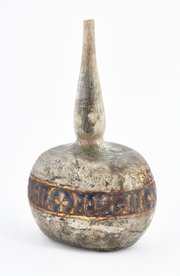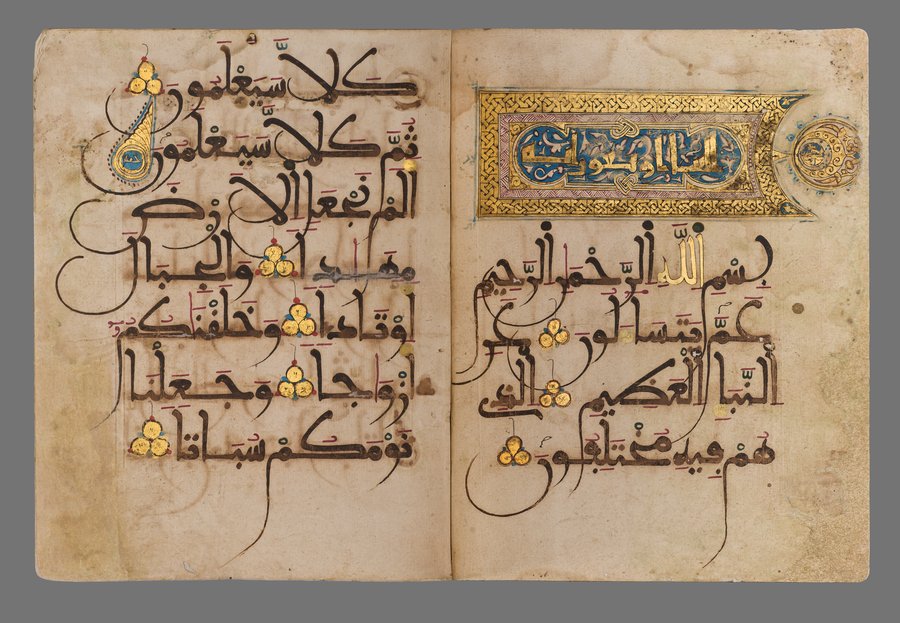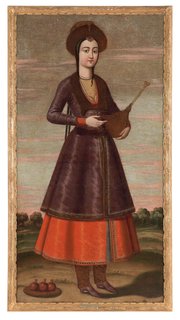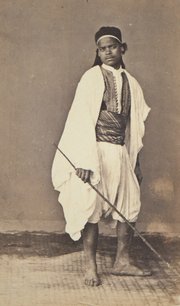
Alawite last section (juz') of a 30-volume Qur'an
Museum of Islamic Art
- Title:
- Alawite last section (juz') of a 30-volume Qur'an
- Dedication:
- Abu Muhammad Sayyid ‘. Al-Ghazwani
- Calligrapher:
- Ahmad I. ibn Abi Ibrahim
- Production place:
- Marrakesh
- Date:
- 1653
- Period:
- Alawite
- Title:
- Alawite last section (juz') of a 30-volume Qur'an
- Dedication:
- Abu Muhammad Sayyid ‘. Al-Ghazwani
- Calligrapher:
- Ahmad I. ibn Abi Ibrahim
- Production place:
- Marrakesh
- Date:
- 1653
- Period:
- Alawite
- Material:
- Paper, Ink, Gold, Gouache, Leather
- Technique:
- Bookbinding, Calligraphy, Illumination
- Dimensions:
- 25.8 × 20.5 × 3.3
This Qur’an juz’ is the last section of a 30 volumes Qur’an from Morocco. It is copied on paper in dark brown ink, using the maghribi script. This script was developed in the 4th century AH / 10th century CE in North Africa and is characterised by its curved lines and large strokes. The sura headings are written in gold Kufic script, sometimes on a blue background and are marked in the margin by decorated medallions. The word Allah is also highlighted in gold throughout the manuscript and the vocalisation is rendered with red and blue ink. Individual verses are indicated by polylobed gold markers while the groups of five and ten verses are respectively separated by teardrop and circular shapes, sometimes highlighted with blue colour and inscribed with the words khams and ‘ashr. The volume ends with a colophon written in gold thuluth script set on a blue background. The manuscript was copied and illuminated by Ahmad ibn ‘Ali ibn Abi Ibrahim and the date, 1063 AH / 1653 CE, was interestingly written using European numerals as seen in other North African and Andalusian medieval manuscripts. It was dedicated to Abu Muhammad Sayyid ‘Abdallah al-Ghazwani, one of the seven Sufi saints of Marrakesh, a follower of the Jazuli order who died in 935 AH / 1529 CE. The format follows a typical vertical layout used in Spain and North Africa from the 7th century AH /13th century CE onwards, whether on parchment or paper. Several earlier examples copied on the Jativa pink paper exist and feature the same characteristics (see Marrakesh Ben Youssef library inv. 431). Such high quality volumes would have been produced for prestigious religious institutions such as madrasas and zawiyas and would have commonly been registered as endowments (awqaf or habous).



